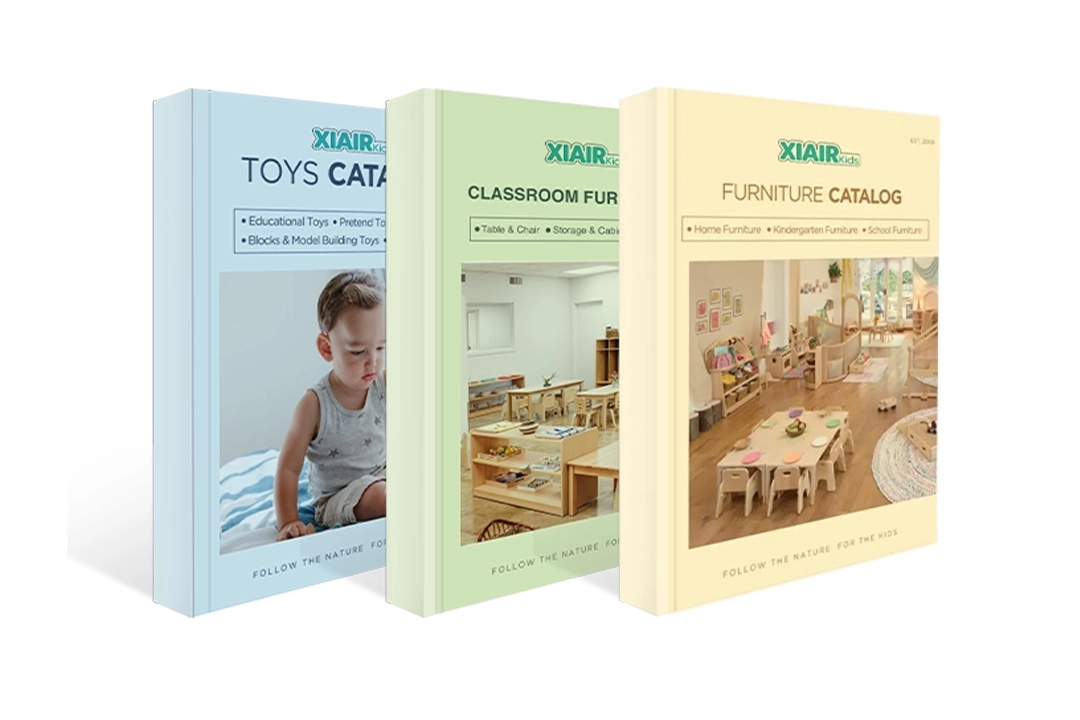Have you ever struggled maintaining order and engagement in your early childhood classroom? Do you find it challenging to give every child a sense of purpose and responsibility each day? Many early childhood educators face these same challenges and wonder how to create a more structured and cooperative learning environment. That’s where preschool classroom jobs can make a big difference.
Preschool classroom jobs are age-appropriate responsibilities assigned to young learners to help them feel involved, capable, and valued. These roles range from simple tasks like line leader or snack helper to specific jobs like calendar assistant or plant caretaker. The purpose of a preschool classroom job is to support daily routines and foster independence, cooperation, and confidence in children. Introducing these jobs into your daily schedule helps streamline classroom management while teaching essential life skills in a hands-on, meaningful way.
In the sections that follow, you’ll discover a wide variety of preschool classroom jobs that are both fun and practical. Whether starting a new school year or refreshing your classroom routine, these jobs will help you build a positive, organized, and inclusive learning environment. Ready to empower your little learners and transform your classroom dynamics? Let’s dive into the most effective and creative preschool classroom jobs that truly work!
What Are Preschool Classroom Jobs?
Preschool classroom jobs are small, manageable responsibilities assigned to young students to help them participate actively in the daily operations of the classroom. These jobs serve as an introduction to responsibility, routine, and collaboration in a way that’s developmentally appropriate for early learners. At its core, a preschool classroom job is more than just a task—it’s an opportunity to build a child’s confidence, independence, and sense of belonging.
Each preschool classroom job is designed with simplicity and purpose. Children might take on roles such as line leader, light switch helper, weather reporter, or clean-up captain. These jobs are usually rotated daily or weekly, ensuring every child gets a turn and experiences the value of contribution. When implemented thoughtfully, these roles can give children a sense of ownership in their classroom environment while reinforcing positive behavior.
Preschool classroom jobs also serve as powerful tools for educators. They reduce the burden of daily routines, streamline transitions, and create a calm, predictable learning space. More importantly, they help teachers identify leadership traits and naturally observe students’ interpersonal dynamics. As a result, every preschool classroom job becomes a gateway for deeper learning and stronger community building.
Benefits of Preschool Classroom Jobs
Preschool classroom jobs offer far more than just classroom assistance—they are a purposeful tool for promoting growth in every area of early childhood development. Educators can create a more engaged, cooperative, and emotionally balanced classroom environment by assigning simple, rotating responsibilities to young learners. Below are some of the key benefits that preschool classroom jobs provide.

Builds Responsibility and Independence
Assigning a preschool classroom job helps young children develop a sense of ownership and accountability. Whether passing out supplies or watering plants, having a defined role teaches kids that they are trusted with real tasks. Over time, they begin to understand the consequences of their actions and develop pride in completing their duties independently, laying the foundation for future self-management skills.
Promotes Classroom Community and Teamwork
Preschool classroom jobs foster a strong sense of community. When each child has a specific task, they feel like an essential part of the classroom. This shared responsibility teaches collaboration and respect for one another’s contributions. Kids quickly learn that the classroom runs smoothly when everyone does their part, promoting cooperation and unity.
Enhances Social and Communication Skills
Many preschool classroom jobs require interaction, like greeting classmates as a morning greeter or announcing the daily weather. These responsibilities allow children to practice speaking, listening, and engaging with others. As a result, their verbal and nonverbal communication skills improve in authentic, confidence-building scenarios.
Encourages Consistency and Routine
A well-planned preschool classroom job chart adds predictable structure to the day. Young children thrive on routine, and knowing what to expect—mainly when they’re involved in maintaining that routine—provides emotional security. Jobs for preschool classroom also help ease transitions between activities, minimizing behavioral disruptions and helping children stay on task.
Supports Leadership and Self-Esteem
Even the smallest preschool classroom job can significantly impact a child’s self-worth. Being chosen as the “line leader” or “teacher’s helper” can be a proud moment, especially for shy or less assertive children. These leadership experiences boost confidence, helping kids recognize their strengths and feel valued by their peers and teachers.
Teaches Real-Life Skills
Preschool classroom jobs introduce young learners to basic life skills they’ll use for years. Tasks like organizing books, setting the table for snack time, or managing classroom supplies develop early executive functioning skills like planning, organizing, and prioritizing. These classroom jobs for preschoolers create natural opportunities to develop responsibility in meaningful, age-appropriate ways.
Don’t just dream it, design it! Let’s chat about your custom furniture needs!
How to Set Up a Preschool Classroom Jobs System?
Creating a well-structured preschool classroom jobs system is more than just handing out tasks—it’s about fostering responsibility, community, and independence in young learners. When done intentionally, this system benefits the children and transforms classroom dynamics in a powerful and lasting way.
Plan with Purpose
Start by reflecting on your classroom’s daily routine. Where do you often need support? What tasks could children help with safely? These might include turning off the lights, pushing in chairs, wiping tables, or watering plants. Each preschool classroom job should meet two criteria: it contributes to the classroom and is age-appropriate.
List out your potential jobs, making sure they’re manageable and meaningful. Avoid “busy work”—every job should help children feel valuable contributors to their classroom environment.
Match Jobs to Developmental Stages
Consider the age, ability, and attention span of your students. Preschoolers do best with short, simple preschool classroom jobs they can complete with minimal assistance. For example:
- 2–3-year-olds might enjoy tasks like putting away toys or handing out napkins.
- 4–5-year-olds may be ready for slightly more responsibility, such as a calendar helper or a line leader.
Each job should be a confidence builder, not a source of stress.
Create a Visual and Interactive Job Chart
Visual aids are critical in preschool settings. Design a job chart using photos of the students, clear icons, and bright colors. Laminate it for durability and hang it where children can see it daily. If possible, use Velcro or magnets so students can move their names or photos under different preschool classroom jobs each week—this keeps the system interactive and engaging.
Job titles can be creative and playful—use names like “Line Leader,” “Weather Watcher,” or “Snack Boss” to make each preschool classroom job exciting.

Demonstrate Every Job Clearly
Before assigning jobs, model each one step-by-step. Act it out, explain why it matters, and let students practice. Repetition is key—most preschoolers need multiple exposures before confidently remembering their role.
- Model each job in front of the class.
- Explain the purpose of the job and why it’s important.
- Demonstrate the actions involved step by step.
- Allow children to practice in low-pressure settings.
During this process, be enthusiastic. Your excitement sets the tone and helps children view the jobs as something to look forward to.
Rotate Jobs Regularly
Rotating preschool classroom jobs gives all children the chance to try different responsibilities and keeps the experience fresh. Most teachers rotate jobs weekly, which provides enough time for mastery without causing boredom.
You can rotate alphabetically, use a name wheel, or simply assign new preschool classroom jobs during Monday morning meetings. The key is to keep the system fair and predictable.
Embed It Into Daily Routines
Don’t treat the job system as a side activity—it should be part of your structured routine. Set aside time each morning to review the job chart and remind students of their roles. Reinforce it with check-ins during the day and praise children for following through.
For example, before transitions (like cleanup or snack time), you can say, “Let’s check with our Clean-Up Crew!” This strengthens the job’s relevance and keeps kids engaged.
Be Flexible and Responsive
While structure is important, flexibility matters too. Some days, a child may need a break or require extra guidance. Be patient and supportive—adjust preschool classroom jobs as needed, and allow space for learning moments. Discuss a role with the child or try a different approach if it isn’t working.
Also, be open to evolving the system over the year. As students grow, they may be ready for more complex preschool classroom jobs or even want to help design new ones.
Keep Records of Job Assignments
To ensure equal opportunities for all children, maintain a simple log of who has done which job. This can be a checklist, spreadsheet, or a physical job journal in your teacher binder.
This is especially helpful when:
- A child feels left out
- Parents ask what their child’s responsibilities are
- You want to reflect on student engagement over time
Track Progress and Celebrate Effort
Create a simple way to track participation—stickers, stars, or verbal praise all go a long way. Consider recognizing children weekly or monthly during circle time. Celebrate not just task completion but also helpfulness, attitude, and growth.
Don’t just dream it, design it! Let’s chat about your custom furniture needs!
50 Preschool Classroom Jobs That Encourage Independence and Responsibility
Introducing preschool classroom jobs is one of the most effective ways to help young children feel empowered, responsible, and connected to their learning environment. By assigning simple, age-appropriate roles, teachers can transform everyday routines into meaningful opportunities for growth. The following list features 50 well-organized job ideas, grouped by function to help you easily identify roles that fit your classroom’s needs.
Daily Routine Helpers

1. Line Leader
Leads the class during all daily transitions, including playground, restroom, or lunchroom trips. This role encourages children to practice self-regulation, spatial awareness, and leadership by modeling calm, orderly movement for peers.
Development: Promotes independence, confidence, and motor control; supports understanding of sequencing and group awareness.
2. Caboose (Line Ender)
Assigned to the end of the line, this student ensures no one is left behind during transitions. Teachers can emphasize the importance of patience and responsibility as the caboose keeps the group together and assists peers when needed.
Development: Fosters empathy, responsibility for others, and awareness of group dynamics.
3. Door Holder
Opens and holds doors for the class during entry and exit times. Teachers can use this job to model manners, turn-taking, and spatial consideration, particularly in high-traffic transitions.
Development: Reinforces social skills, cooperation, and gross motor coordination.
4. Attendance Helper
Works alongside the teacher to check who is present and absent each day, using name cards, visual charts, or checklists. This role can be introduced during morning meetings as a consistent daily task.
Development: Supports early math and literacy (recognizing names, counting); encourages attention to detail and inclusion.
5. Calendar Helper
During the morning meeting, the teacher assists with updating the classroom calendar. Tasks may include naming the day of the week, changing date numbers, or discussing upcoming events.
Development: Develops sequencing skills, vocabulary, public speaking confidence, and time-related understanding.
6. Weather Reporter
Observes the outdoor environment and reports the daily weather to the class. May also update a weather chart or graph as part of the morning routine.
Development: Encourages observation, descriptive language, and early scientific thinking.
7. Lights Helper
Responsible for turning lights on or off at appropriate times—during arrival, nap, circle time, or transitions. This job requires children to be attentive to cues and classroom timing.
Development: Builds awareness of environmental routines, timing, and cause-and-effect relationships.
8. Schedule Monitor
Points to and announces current and upcoming activities on the visual daily schedule. This job helps reinforce classroom structure and builds anticipation for transitions.
Development: Strengthens time management, executive functioning, and language development.
9. Bell Ringer or Signal Leader
It uses a designated signal (bell, chime, hand clap, etc.) to indicate transitions, such as clean-up time or lining up. Teachers can introduce this as a nonverbal cue to reduce noise and build responsibility.
Development: Supports impulse control, rhythm and auditory awareness, and non-verbal communication.
10. Table Setter
Prepares snack or lunch areas by distributing utensils, plates, or placemats. Encourages responsibility for shared spaces and reinforces one-to-one correspondence.
Development: Develops fine motor skills, sequencing, and task planning; fosters helpfulness and preparation.
Cleaning and Organization Helpers
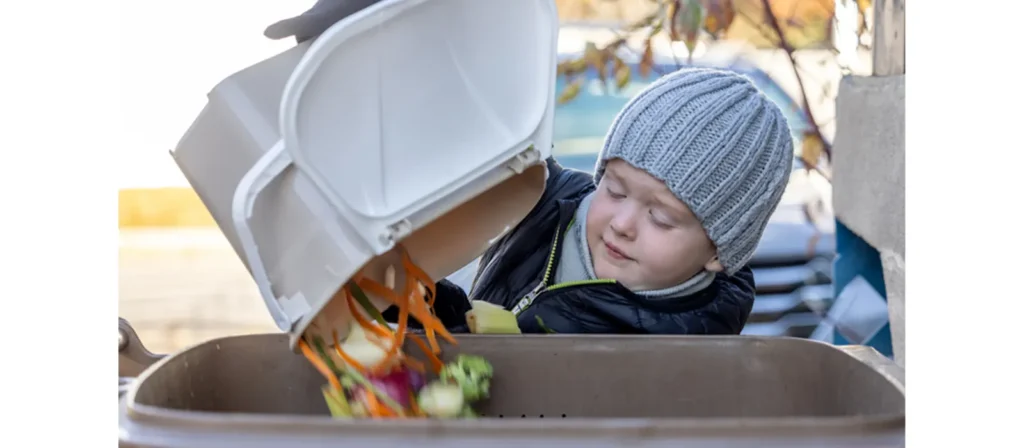
11. Clean-Up Captain
Reminds peers when it’s time to tidy up and encourages classmates to return materials to their proper places. This job works best when paired with consistent clean-up songs or timers.
Development: Builds initiative, responsibility, and time awareness; supports leadership and peer collaboration.
12. Toy Organizer
Ensures preschool toys are placed in the correct bins or shelves after playtime. Can work with picture labels or color-coded systems to support organization.
Development: Promotes sorting, categorizing, and visual matching; reinforces attention to detail and orderliness.
13. Chair Stacker
Stacks or pushes in chairs after meals or table work. Teachers can pre-teach safe lifting and spacing rules.
Development: Develops gross motor coordination, spatial awareness, and respect for the classroom environment.
14. Floor Checker
At the end of activities, the worker scans the floor for dropped items, trash, or misplaced materials. If appropriate, the worker can use tongs or gloves.
Development: Strengthens observational skills, promotes ownership of shared space, and reinforces safety habits.
15. Supply Shelf Organizer
Tidies up markers, glue, scissors, and other shared materials. Can be taught to sort by color, size, or function depending on the classroom system.
Development: Supports classification skills, fine motor control, and responsibility for community resources.
16. Paper Collector
Gathers completed papers or unused sheets from desks and redistributes them as needed. This helps keep tables clear and materials ready for the next activity.
Development: Encourages patience, sorting, and task focus; supports understanding group work processes.
17. Trash Monitor
Helps ensure trash is properly placed in bins and reminds others to throw away waste after snack or crafts. Can work in pairs with a recycling helper.
Development: Reinforces care for the environment, civic responsibility, and routine-building.
18. Lost-and-Found Helper
Collects items left around the room (like water bottles or jackets) and returns them to the proper place or a lost-and-found basket.
Development: Promotes attention to others’ belongings, empathy, and follow-through.
19. Book Shelf Organizer
Straightens the class library by placing books upright and in the correct area. Younger children can work with picture-coded shelves.
Development: Encourages order, respect for shared materials, and literacy engagement through book handling.
20. Mat Roller / Rug Folder
Rolls up rest mats, yoga mats, or rugs after use. Ideal for classes that use flexible seating or quiet zones.
Development: Builds fine motor strength, sequencing skills, and care for classroom property.
Emotional and Social Support Jobs

21. Kindness Helper
Encourages acts of kindness throughout the day by noticing and acknowledging classmates who are being helpful or friendly. May use a kindness jar, stickers, or simple verbal praise.
Development: Promotes empathy, emotional literacy, and recognition of positive social behavior.
22. Classroom Greeter
Welcomes classmates in the morning with a wave, high-five, or greeting of choice. Can rotate greetings to promote creativity and social confidence.
Development: Builds social-emotional connection, communication skills, and classroom inclusivity.
23. Emotion Checker
Helps monitor the class’s feelings by using an emotion chart or check-in board. May assist peers in identifying or naming their emotions during arrival or reflection times.
Development: Enhances emotional awareness, self-expression, and vocabulary related to feelings.
24. Peace Keeper
Supports conflict resolution by helping remind classmates to use kind words and calm voices. Can assist in using tools like a peace table or conflict cards.
Development: Reinforces self-regulation, problem-solving, and respectful communication.
25. Compliment Giver
Shares positive words with a different classmate each day, aloud or by drawing a “compliment card” with teacher support.
Development: Encourages social confidence, kindness, and language development related to praise.
26. Mood Monitor
Observes class energy and tone. Helps remind peers of quiet times, transitions, or calm-down cues (with teacher guidance).
Development: Builds group awareness, mindfulness, and the ability to respond to social environments.
27. Friendship Helper
Checks in with children who are alone, sad, or new to the class. Can invite them to play or partner with them in group activities.
Development: Strengthens compassion, leadership, and social inclusion skills.
28. Inclusion Assistant
Helps ensure all children are included in group games or discussions by reminding others to take turns or invite peers in.
Development: Reinforces fairness, community-building, and respect for differences.
29. Star Sharer
Each day, they select a classmate to share something about themselves during circle time (e.g., favorite color, hobby). They support peer recognition and public speaking.
Development: Enhances classroom bonding, confidence, and listening skills.
30. Gratitude Reporter
At the end of the day, it helps the class reflect by naming something they’re thankful for and recording it on a class chart or journal.
Development: Encourages reflection, emotional balance, and positive mindset habits.
Don’t just dream it, design it! Let’s chat about your custom furniture needs!
Creative and Academic Jobs
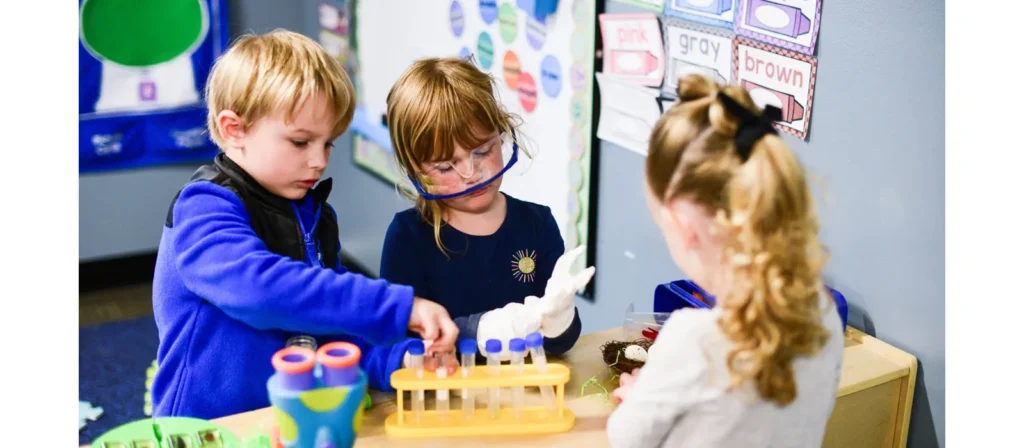
31. Book Buddy
Chooses a book each day to share with the class—either by showing the cover during circle time or placing it in the “Book of the Day” stand.
Development: Encourages early literacy interest, ownership of reading choices, and print awareness.
32. Alphabet Helper
Assists in identifying the letter of the week, tracing letters on the board, or helping match letters to words or sounds during activities.
Development: Supports letter recognition, phonemic awareness, and language development.
33. Counting Leader
Leads the class in counting during calendar, snack time, or transitions (e.g., steps to the door, blocks on the table).
Development: Builds number sense, one-to-one correspondence, and math confidence.
34. Puzzle Master
Chooses and completes a classroom puzzle, then helps classmates put together puzzle pieces during free play or centers.
Development: Reinforces spatial reasoning, problem-solving, and persistence.
35. Art Supply Manager
Prepares and organizes materials for art projects, such as crayons, paper, scissors, or paint. Ensures supplies are cleaned and put away afterward.
Development: Develops planning and organization skills, fine motor coordination, and artistic responsibility.
36. Craft Station Assistant
Helps distribute and collect craft items during group art sessions. May assist others in following steps or cleaning brushes.
Development: Encourages teamwork, sequencing, and self-help skills.
37. Writing Table Monitor
Keeps the writing center neat and supplies available—sharpening pencils, stacking paper, and organizing name cards.
Development: Supports print motivation, self-direction, and fine motor refinement.
38. Shape Spotter
Finds and names shapes around the room or during structured math time. It can also help during shape-sorting games.
Development: Builds geometry vocabulary, visual discrimination, and descriptive language.
39. Music Helper
Selects a classroom song during music or circle time and assists with handing out instruments like tambourines or scarves.
Development: Enhances auditory rhythm, musical appreciation, and expressive participation.
40. STEM Station Helper
Assists with setup and cleanup of building blocks, magnets, ramps, or other exploratory materials in the science/math area.
Development: Promotes curiosity, experimentation, and early STEM thinking through hands-on engagement.
Environmental and Nature Jobs

41. Plant Caretaker
Waters and checks on classroom plants daily or weekly. It may help prune leaves or observe plant growth over time.
Development: Encourages responsibility, observation skills, and respect for living things.
42. Animal Helper
Feeds class pets (if any), helps clean cages or tanks, and reminds peers to handle animals gently.
Development: Promotes empathy, gentle behavior, and understanding of animal care routines.
43. Recycling Monitor
Reminds classmates to recycle properly and checks bins for items that belong in the recycling rather than the trash.
Development: Builds environmental awareness, categorization skills, and social responsibility.
44. Energy Saver
Turns off lights, unplugs items, or electronics when not in use (with supervision). May remind peers to conserve energy during the day.
Development: Reinforces sustainability habits, awareness of resources, and classroom stewardship.
45. Nature Explorer
During outdoor time, they observe and share something interesting they find in nature (e.g., a leaf, a cloud shape, or animal tracks).
Development: Develops observation, descriptive language, and scientific curiosity.
46. Weather Chart Manager
Updates a weather graph or record sheet in coordination with the weather reporter. Helps track trends over time.
Development: Supports data collection, early math concepts, and cause-and-effect thinking.
47. Compost Collector
Collects leftover food scraps (if composting is available) and places them in a compost container with adult assistance.
Development: Teaches eco-conscious habits, sorting skills, and biology-related awareness
48. Outdoor Equipment Checker
Checks playground or outdoor toys for damage or missing pieces and reports to a teacher before clean-up.
Development: Builds responsibility, attention to detail, and community care values.
49. Garden Helper
Assists with planting, watering, weeding, or harvesting in a school garden if available. Works with seasonal cycles.
Development: Fosters sensory engagement, life cycle understanding, and delayed gratification.
50. Classroom Air Checker
Opens or closes windows (with help), turns on fans, or reminds teachers to adjust airflow for comfort or ventilation.
Development: Encourages environmental awareness, physical sensitivity, and proactive classroom involvement.
Your perfect classroom is one click away!
Adapting Preschool Classroom Jobs for Different Age Groups
While the concept of preschool classroom jobs is valuable across all early childhood settings, the way these jobs are introduced and implemented should be tailored to the developmental abilities of each age group. Younger children may need more visual support and guidance, while older preschoolers can handle more responsibility and complexity. Below is a breakdown of how to adapt preschool classroom jobs by age and developmental stage.
Classroom Jobs for Toddlers (Ages 2–3)
Children are beginning to understand routines and cause-and-effect relationships at this stage. Jobs should be simple, hands-on, and heavily supported by visuals and modeling.
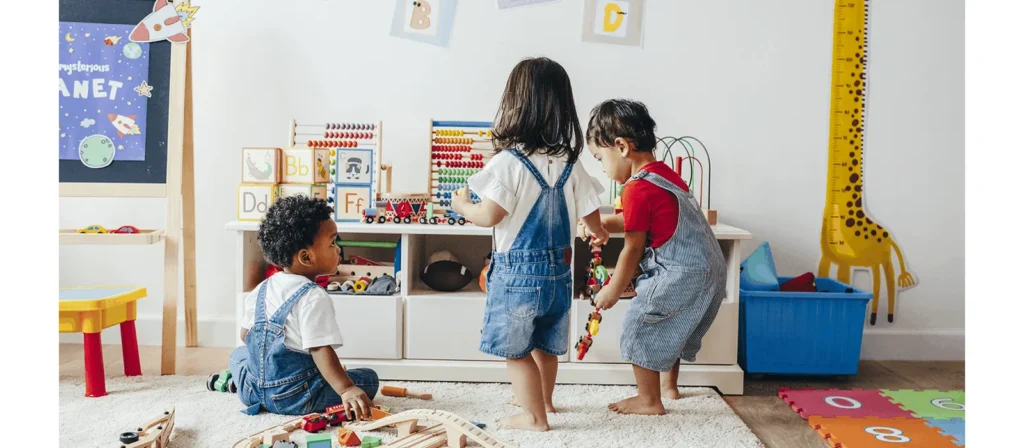
Examples of appropriate jobs:
- Light switch helper
- Toy picker-upper
- Chair pusher
- Snack basket carrier
- Book basket returner
Tips for this age:
- Use picture-based job charts with minimal text.
- Assign one job at a time to reduce overwhelm.
- Celebrate effort, not outcome—participation is the goal.
Development focus:
These jobs promote imitation, gross motor coordination, and early responsibility. They also help toddlers feel included and capable within the classroom community.
Classroom Jobs for Preschoolers (Ages 3–4)
At this age, children begin to understand sequencing, develop social awareness, and show pride in “big kid” responsibilities. They are ready for slightly more structured tasks that require basic decision-making and consistency.

Examples of appropriate jobs:
- Line leader or caboose
- Calendar helper
- Table cleaner
- Weather reporter
- Puzzle shelf organizer
Tips for this age:
- Rotate jobs weekly for familiarity and routine.
- Use photo-name tags to assign roles visually.
- Model each job clearly before independent execution.
Development focus:
At this stage, preschoolers are learning about fairness, cooperation, and task completion. Classroom jobs for preschool support self-regulation, early academic routines, and peer interaction.
Classroom Jobs for Pre-K (Ages 4–5)
Pre-K students are ready to take on jobs that involve more steps, increased independence, and leadership opportunities. They enjoy consistency but can also begin to reflect on their role and its impact on the group.

Examples of appropriate jobs:
- Attendance tracker
- Compost or recycling monitor
- Art supply manager
- Emotion checker
- Music helper
Tips for this age:
- Allow student choice or rotation input to increase engagement.
- Encourage reflection: “What did you enjoy about your job this week?”
- Introduce peer-helper roles to support classmates with specific tasks.
Development focus:
Pre-K jobs promote accountability, initiative, and the early development of executive functioning. They lay a foundation for later academic readiness and classroom citizenship.
Mixed-Age Classrooms: What to Consider
In multi-age settings, it’s important to differentiate tasks not by assigning “easy” or “hard” jobs, but by offering multiple levels of support. Younger students can shadow older ones, and older students can take on peer mentorship roles.

Strategies:
- Pair students with “job buddies” across age groups.
- Create job tiers (e.g., plant helper → garden log keeper) that evolve with ability.
- Keep expectations flexible and individualized.
Development focus:
A well-adapted preschool classroom job system in mixed-age classrooms fosters collaboration, empathy, and leadership development across the learning community.
Don’t just dream it, design it! Let’s chat about your custom furniture needs!
Tips for Success in Implementing Preschool Classroom Jobs
Even with a well-structured system in place, the success of preschool classroom jobs depends on how they’re introduced, reinforced, and maintained. Below are practical tips to help ensure your job system stays engaging, fair, and effective throughout the school year.
- Keep Job Descriptions Simple and Clear
Children need clarity to feel successful. Use short, concrete language when describing each job—“Push in chairs,” “Water the plant,” “Hold the door.” Avoid giving too many instructions at once. If needed, break jobs into steps and review them regularly. - Reinforce Positively, Not Perfectly
Praise effort and progress rather than expecting perfection. A child who forgets their job occasionally is still learning. Gentle reminders, encouragement, and celebrating small successes build confidence and motivation. - Use Jobs to Support Shy or Reluctant Children
Some children may be hesitant to participate, especially in group settings. Assigning them small, consistent jobs—like “book helper” or “pencil passer”—can give them purpose and help them feel more connected. Preschool classroom jobs can be a great confidence-building tool for introverted students. - Maintain Engagement Through Rotation and Variety
Children love novelty, so rotating jobs regularly helps prevent boredom. Introduce fun or seasonal jobs (like “pumpkin counter” or “holiday helper”) to keep interest high. For long-term roles, offer choices or let children help pick their next job. - Handle Job Conflicts with Empathy
Disagreements over jobs are common in preschool classrooms. Use these moments to teach turn-taking, empathy, and problem-solving. A simple visual schedule or timer can help children see when their turn is coming and reduce emotional reactions. - Adapt Jobs as Your Classroom Evolves
As the year progresses, your class and their abilities will grow. Don’t be afraid to introduce more complex jobs or retire roles that no longer serve your routine. Reflect on what’s working and involve children in suggesting new ideas. - Celebrate Participation
Take time to recognize contributions, whether it’s a job well done or a week of consistent effort. Use verbal praise, small certificates, or a “helper of the week” spotlight to show that their efforts matter.
Tools and Materials to Support Preschool Classroom Jobs
Successfully managing preschool classroom jobs require more than just assigning tasks—it involves having the right tools and materials that make the system visible, engaging, and functional. These resources help children remember their roles, take ownership, and complete tasks independently.
1. Visual Job Charts
A job chart is the foundation of any classroom job system. It serves as a visual reference that helps children know which job they have and what is expected of them.
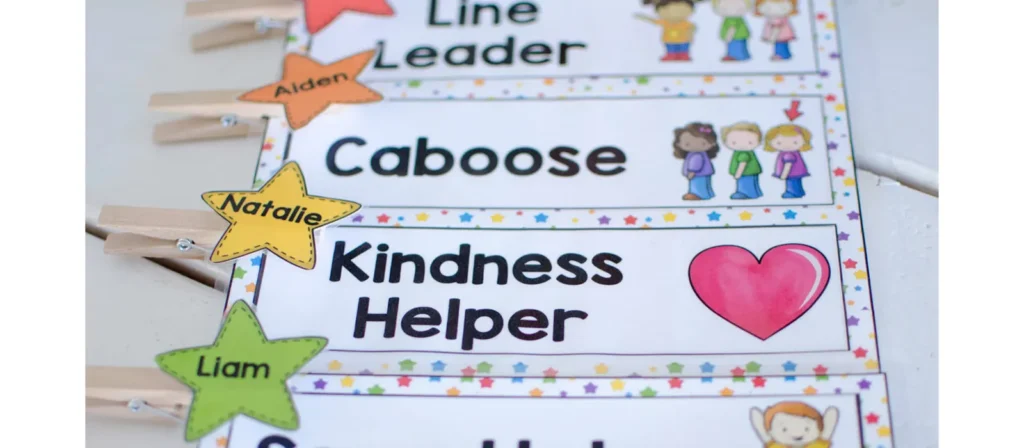
Common formats:
- Picture step charts
- Magnetic boards
- Velcro displays
- Bulletin board posters
- Rotating wheels
Tips:
- Use photos of the children next to job icons for personalization.
- Keep the chart at eye level and review it during morning meetings.
- For non-readers, use clear illustrations or real photos instead of text only.
2. Job Cards and Icons
Individual job cards (with pictures and names) help children understand their specific role. These can be handed out, placed on desks, or clipped onto lanyards.
Suggestions:
- Laminate cards for durability.
- Color-code jobs by category (e.g., blue = cleaning, green = routine).
- Include a brief picture-based instruction on the back if needed.

3. Task Tools and Role Accessories
Providing small, tangible tools linked to certain preschool classroom jobs can help children perform their roles confidently and independently. Use real tools where safe, or child-sized versions to reinforce task authenticity and hands-on learning.
Examples:
- Mini watering can for plant caretaker
- Spray bottle and cloth for table cleaner (with supervision)
- Bell or chime for signal leader
- Weather chart tools for a weather reporter
- Sorting baskets for a toy organizer or recycling monitor
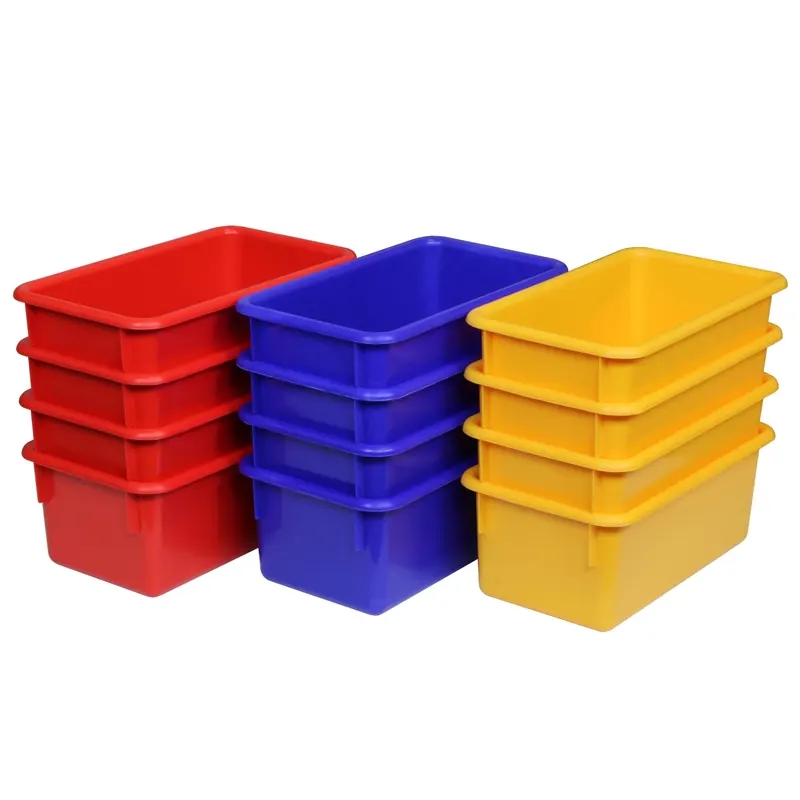


4. Reflection and Reward Tools
Celebrating job performance motivates continued effort and reinforces the importance of each role. Keep reinforcement positive and effort-focused rather than competitive or reward-based alone.
Tools you can use:
- “Helper of the Day” or “Job Star” certificates
- Job journals or checklists
- Sticker charts or punch cards
- End-of-week sharing circle: “What was your favorite job and why?”

Your perfect classroom is one click away!
Frequently Asked Questions about Preschool Classroom Jobs
- How often should I rotate preschool classroom jobs?
Most teachers rotate preschool classroom jobs weekly to give children time to settle into their roles and feel ownership. However, daily rotation may work better for short attention spans or small groups. Whichever schedule you choose, consistency is key—rotate on the same day each time to build a routine. - What if a child refuses to do their assigned job?
Refusal can stem from shyness, uncertainty, or lack of interest. First, make sure the child understands the job and feels capable. Offer modeling, peer support, or assign a “job buddy.” If refusal continues, try offering a choice or reducing the job’s complexity. The focus should remain on participation and confidence-building, not perfection. - How do I track who has had which job?
Record weekly assignments using a simple rotation chart, checklist, or job journal. This helps ensure fairness and allows you to review patterns if a child feels left out or repeatedly avoids certain roles. - Are preschool classroom jobs useful in mixed-age preschool groups?
Absolutely. Preschool classroom jobs can be easily adapted for multi-age classrooms by differentiating job expectations or using peer-pairing systems. Older children can model or assist with jobs, while younger children participate in simplified versions. This fosters collaboration and leadership across age levels. - What if I don’t have time to manage a full job system?
Start small. Even assigning just one or two rotating preschool classroom jobs can make a difference in classroom engagement and responsibility. As routines become more automatic, you can build out your job system over time. Keep the process flexible and focused on student growth—not administrative perfection. - Are preschool classroom jobs suitable for very young children (2–3 years old)?
Yes—just keep the tasks simple, sensory-based, and brief. At this age, jobs like turning off the lights, handing out napkins, or helping pick up toys can be both fun and effective in introducing the concept of shared responsibility.
Conclusion
Introducing a preschool classroom job system isn’t just about assigning tasks—it’s about building a positive, structured, and empowering environment where every child feels valued and capable. From leadership roles to cleanup helpers, each preschool classroom job contributes to a larger purpose: nurturing independence, responsibility, and a sense of community.
As educators, we have the incredible opportunity to teach children how their actions impact others and how they can participate actively in their learning space. By thoughtfully implementing and adapting preschool classroom jobs, we help lay the foundation for social-emotional development, self-regulation, and lifelong responsibility.
Remember that flexibility, encouragement, and consistency are key, whether you’re just beginning or refining your current system. With the right approach and tools, even the youngest learners will rise to the occasion and do it with pride.



